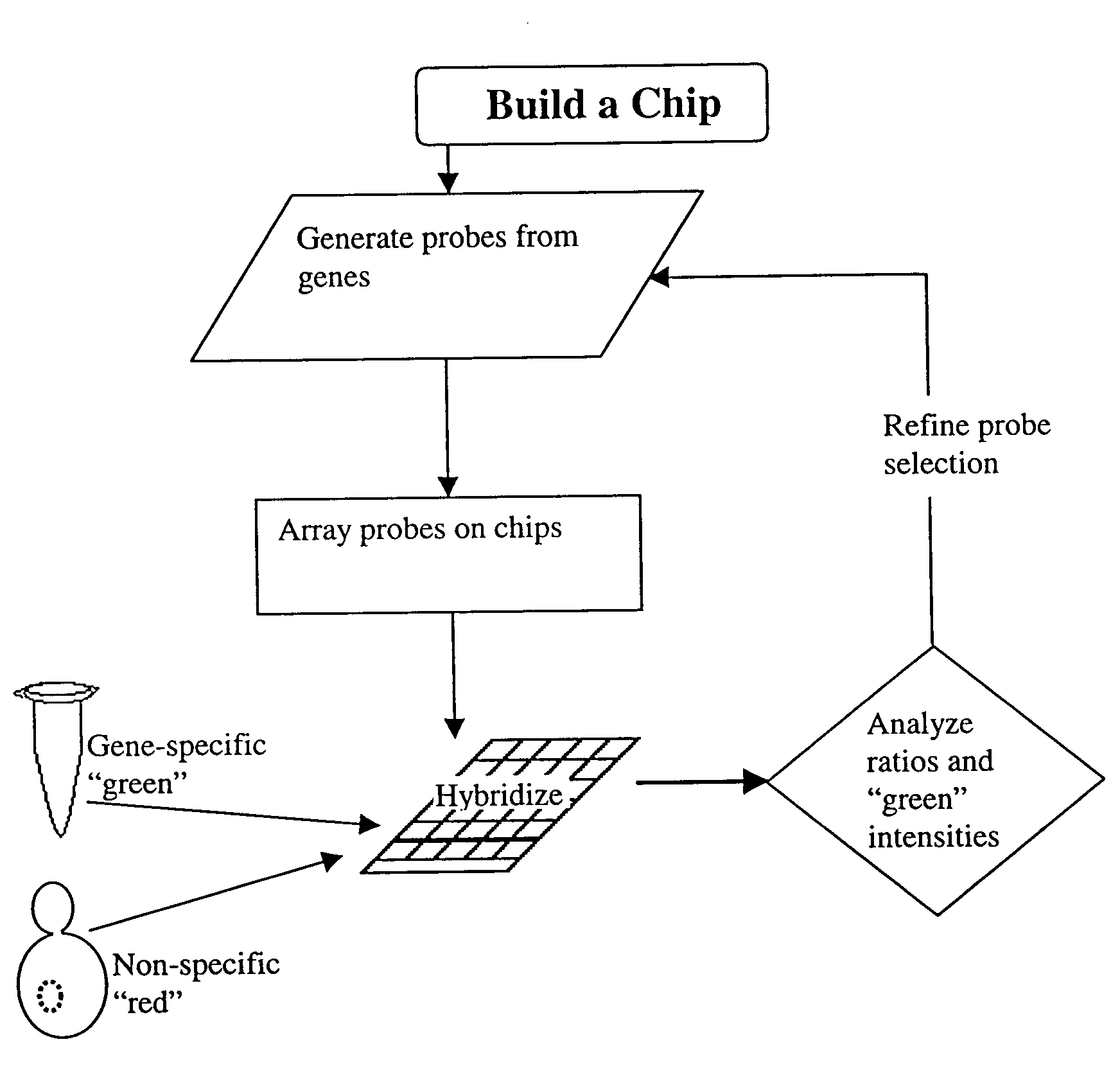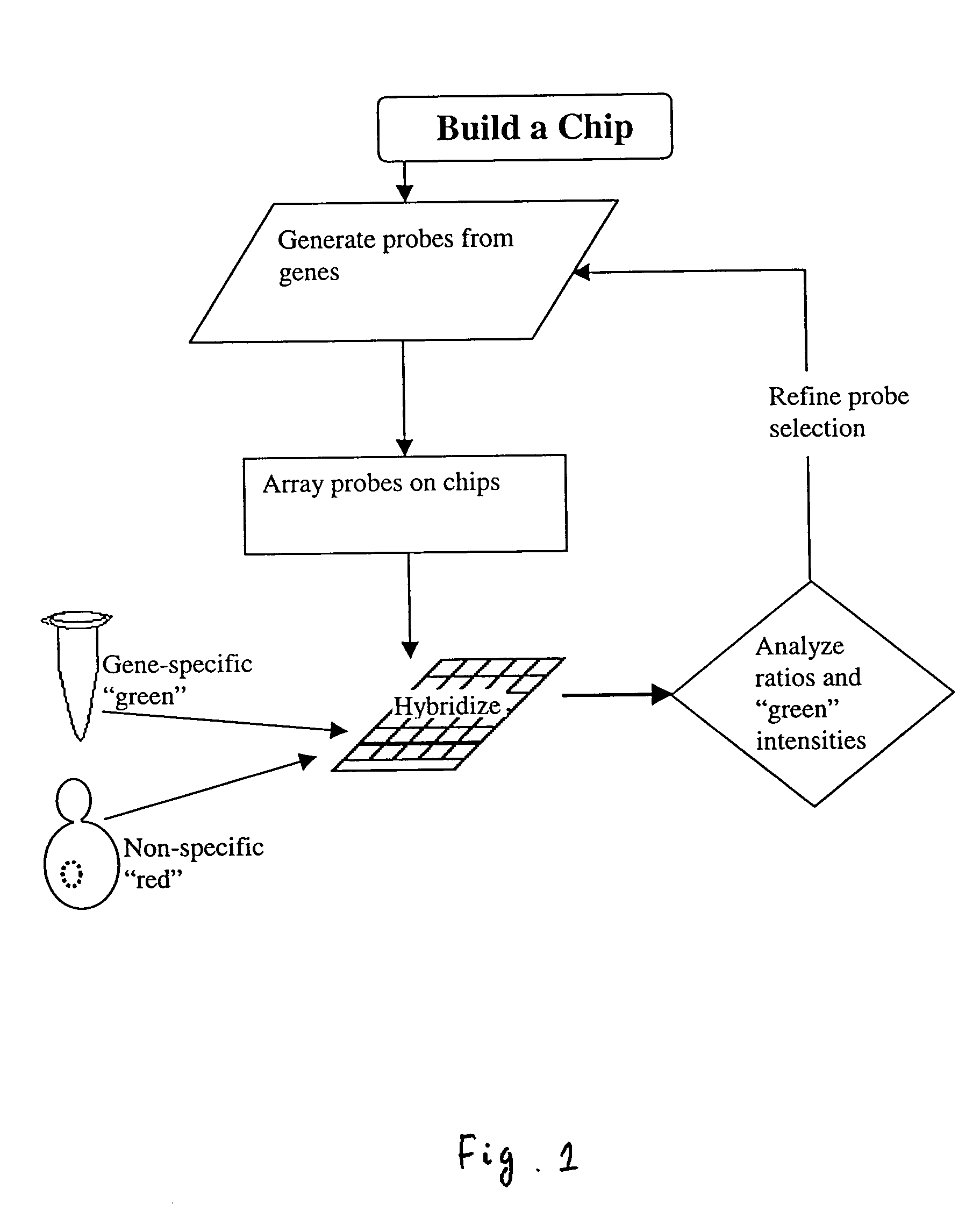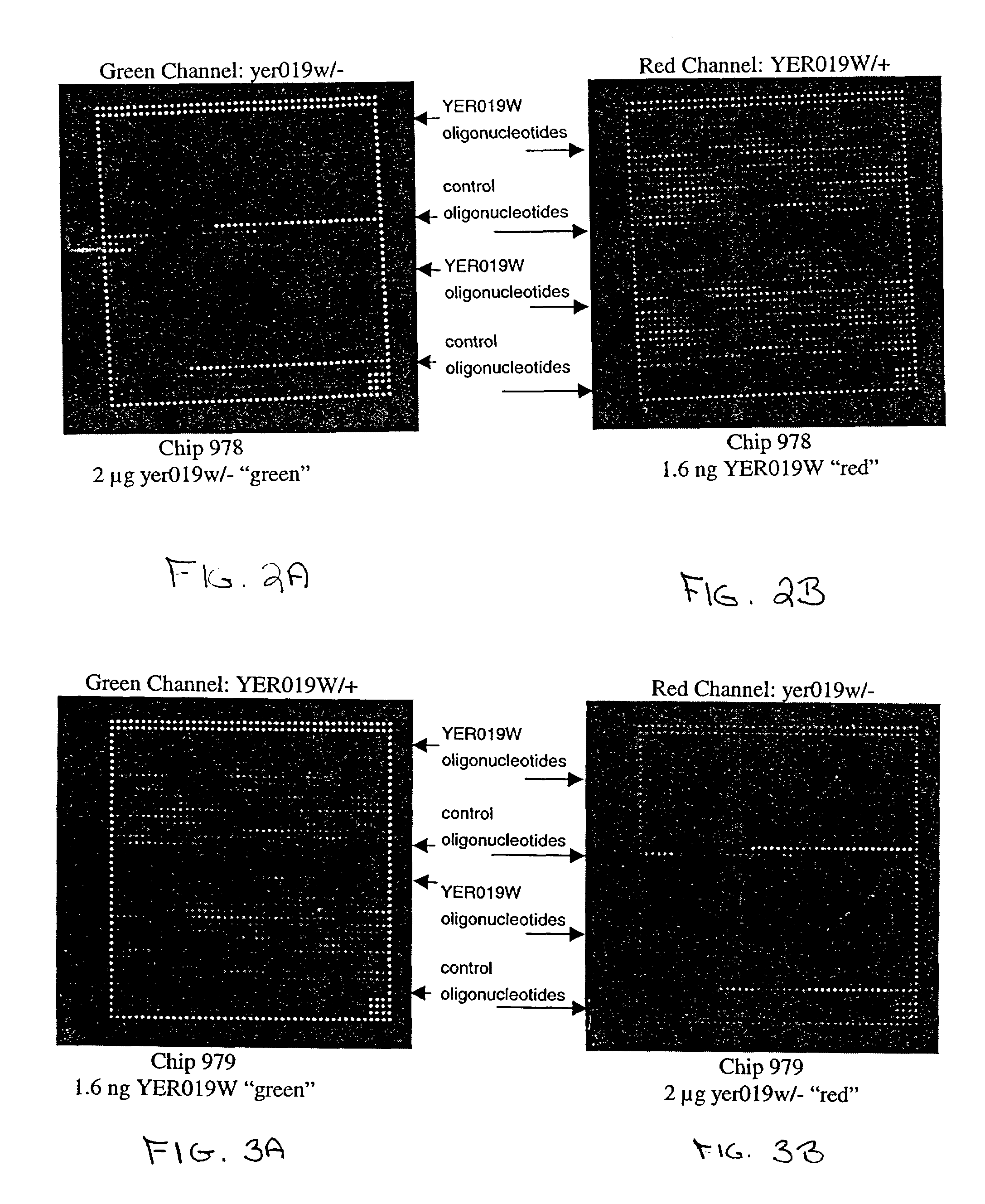Methods for determining the specificity and sensitivity of oligonucleo tides for hybridization
a technology of oligonucleotide tide and specificity, applied in the field of polynucleotide sequence detection and reporting, can solve the problems of false positive hybridization measurement, false negative hybridization measurement, and match-mismatch scheme can only screen out cross-hybridization from distantly related sequences
- Summary
- Abstract
- Description
- Claims
- Application Information
AI Technical Summary
Benefits of technology
Problems solved by technology
Method used
Image
Examples
first embodiment
[0111]In this first embodiment, the second hybridization sample (i.e., the non-specific hybridization sample) comprises a plurality of different polynucleotide molecules, each different polynucleotide molecule having a different nucleotide sequence. In particular, each of the nucleotide sequences of the polynucleotide molecule in the non-specific hybridization sample should be different from the nucleotide sequence of the target polynucleotide in the specific hybridization sample. For example, in embodiments wherein the sequence of the target polynucleotide is the sequence of a particular gene or gene transcript of a cell or organism, the nucleotide sequences of the polynucleotide molecules in the second, non-specific hybridization sample preferably comprise sequences representing the other genes or gene transcripts of the cell or organism.
[0112]Such sequences are also preferably present in the non-specific hybridization sample in substantially the same abundances or amounts as thei...
second embodiment
[0119]In a second preferred embodiment of the invention, the specific hybridization sample is identical to the specific hybridization sample of the first preferred embodiment described above. However, the non-specific hybridization sample of this second embodiment is preferably derived from a source with a normal amount of the target polynucleotide in addition to a plurality of other polynucleotide sequences. For example, in those embodiments wherein the sequence of the target polynucleotide is the sequence of a particular gene or gene transcript of a cell or organism, the nucleotide sequences of the polynucleotide molecules in the second, non-specific hybridization sample preferably comprise sequences representing both the gene or gene transcript corresponding to the particular target polynucleotide and the other genes or gene transcripts of the cell or organism.
[0120]Such non-specific hybridization samples can be prepared from normal or “wild type” cells or organisms that express ...
third embodiment
[0122]The second or non-specific hybridization sample in this third preferred embodiment of the invention is preferably identical to the non-specific hybridization sample described, above, for the first preferred embodiment of the invention. In particular, the non-specific hybridization in this third preferred embodiment preferably comprises a plurality of different nucleotide molecules, with each different polynucleotide molecule having a different polynucleotide sequence and with each polynucleotide sequence in the non-specific hybridization sample being different from the polynucleotide sequence of the target polynucleotide. For example, in particularly preferred aspects of this third embodiment, the nonspecific hybridization sample is a polynucleotide sample obtained from a deletion mutant of the cell or organism wherein the gene corresponding to the target polynucleotide sequence has been deleted or is silent. Such an embodiment is particularly preferred, e.g., in applications ...
PUM
| Property | Measurement | Unit |
|---|---|---|
| Fraction | aaaaa | aaaaa |
| Fraction | aaaaa | aaaaa |
| Fraction | aaaaa | aaaaa |
Abstract
Description
Claims
Application Information
 Login to View More
Login to View More - R&D
- Intellectual Property
- Life Sciences
- Materials
- Tech Scout
- Unparalleled Data Quality
- Higher Quality Content
- 60% Fewer Hallucinations
Browse by: Latest US Patents, China's latest patents, Technical Efficacy Thesaurus, Application Domain, Technology Topic, Popular Technical Reports.
© 2025 PatSnap. All rights reserved.Legal|Privacy policy|Modern Slavery Act Transparency Statement|Sitemap|About US| Contact US: help@patsnap.com



